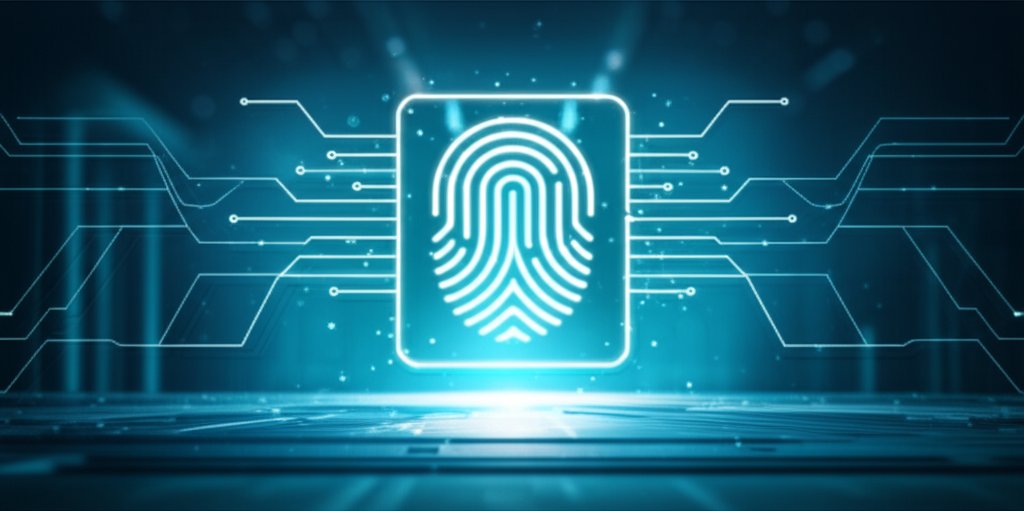Phishing. It’s a word that evokes a visceral sense of dread for good reason. These insidious attacks are not just annoyances; they are responsible for a staggering volume of data breaches, financial losses, and widespread identity theft every single year. We’ve all encountered the warnings, honed our skills at spotting red flags, and perhaps even experienced the sinking feeling of falling victim to a cunning lure ourselves. But what if a fundamental shift is on the horizon, one that could dramatically diminish the power and effectiveness of these scams? We’re talking about decentralized identity (DID), a revolutionary approach where you, the individual, regain full control over your digital identity, rather than relying on companies to manage it for you. This new paradigm promises a future where we’re no longer constantly scanning the horizon for the next phishing attempt. Instead, decentralized identity directly combats phishing by empowering you with robust, unforgeable credentials that make it virtually impossible for attackers to impersonate trusted entities or steal your login information. It’s a game-changer designed to put you firmly back in command of your digital security.
The Phishing Problem: Why Traditional Security Isn’t Enough
Before we dive into potential solutions, it’s critical to ensure we have a shared understanding of the problem. We need to grasp just how sophisticated and pervasive phishing attacks have become, especially in the era of AI phishing attacks, and why our current security paradigms often fall short.
Phishing 101: What It Is and How It Works
At its core, phishing is a deceptive tactic meticulously crafted to trick you into voluntarily divulging sensitive information. Imagine a highly skilled digital con artist, adept at sweet-talking you into handing over your most valuable possessions. These attacks manifest in myriad forms: the urgent-looking email from your “bank” demanding you “verify” your account details, the text message (smishing) about a “shipping delay” that requires your login, or even a phone call (vishing) from someone impersonating tech support. Regardless of the vector, their ultimate aim is consistent: to exploit your trust, create a manufactured sense of urgency, or play on your natural curiosity. Understanding common email security mistakes can further protect your inbox from such threats.
So, why is it so incredibly effective? Because phishing preys on fundamental human nature and, inevitably, human error. Even the most vigilant and tech-savvy among us can have an “off” day, glance quickly at an email, and inadvertently click a malicious link or enter credentials onto a meticulously crafted fake website that looks almost identical to the legitimate one.
The Achilles’ Heel of Centralized Identity
Our prevailing online identity system – what we call centralized identity – constitutes a significant, fundamental component of the phishing problem. When you create an account with an online service, you effectively entrust that company with your username and password, relying entirely on them to protect that sensitive information. This means your data is consolidated and stored in their central databases.
This “honeypot” problem is precisely what fuels the success of sophisticated phishing campaigns. Why target individuals one by one when breaching a single company’s database can yield millions of usernames and passwords? These large-scale data breaches provide attackers with legitimate credentials and personal information, making their subsequent phishing attempts incredibly convincing. Furthermore, managing dozens, if not hundreds, of online accounts inevitably leads to password fatigue. We often resort to reusing passwords or choosing weak ones, unwittingly creating even more vulnerabilities that phishers are eager to exploit.
It’s clear that our current, centralized identity model is an inherent part of the problem. If we are to truly combat the rising tide of phishing, we need a fundamental shift in how digital identities are managed and secured. This brings us to the transformative solution: decentralized identity.
Decentralized Identity (DID) Explained: Your Digital Passport, Owned by YOU
If centralized identity has become an Achilles’ heel, what, then, is the robust solution capable of turning the tide? Enter decentralized identity.
What is Decentralized Identity?
The core concept of decentralized identity is truly revolutionary: you control your own digital identity, not a company, not a government, but you. Imagine your identity isn’t scattered across countless corporate databases, vulnerable to breach, but instead, it’s something you possess and manage yourself. Think of it like a physical passport or driver’s license, but specifically for your online life – and you carry it securely in a digital wallet on your phone or computer. With DID, you decide precisely when, where, and with whom you share your information.
The Building Blocks of Your Digital Freedom
DID isn’t a single, monolithic technology; it’s a robust ecosystem built upon a few key, interconnected components:
- Digital Wallets: These are secure applications or hardware devices where you store and manage your identity information. They function much like a physical wallet, but for your digital credentials and keys.
- Verifiable Credentials (VCs): Think of VCs as tamper-proof digital “stamps of approval” issued by trusted sources. For example, your bank could issue a VC cryptographically proving you have an account with them, or your university could issue one for your degree. These aren’t merely digital copies; they’re cryptographically secured so that their authenticity and integrity can be verified by anyone, preventing fraud. You present these VCs to prove specific attributes about yourself without needing to overshare the underlying, sensitive data.
- Decentralized Identifiers (DIDs): These are unique, private digital addresses that belong solely to you. Unlike a username tied to a specific company or service, your DID is globally unique, persistent, and isn’t dependent on any central authority for its existence or management. It serves as your personal, unchangeable online handle.
How do they work together? You store your Verifiable Credentials securely in your digital wallet. When an online service needs to verify a specific attribute about you (e.g., your age, your employment status, or your bank account status), you present only the relevant VC from your wallet, linked to your DID. The receiving service can then cryptographically verify the VC’s authenticity and confirm who issued it, all without you having to reveal excess personal data. This selective disclosure is a cornerstone of DID’s power.
How Decentralized Identity Stops Phishing in Its Tracks
Now, let’s delve into the most exciting part: how this new, empowering approach fundamentally dismantles the very tactics phishers rely upon, making their schemes far less effective.
Say Goodbye to Password-Based Phishing (Mostly!)
The vast majority of phishing attacks are designed with one primary goal: to steal your username and password. With DID, the fundamental need for these traditional passwords is significantly reduced, if not entirely eliminated for many interactions. Instead of typing in a password, authentication relies on the secure exchange of cryptographic keys and digital signatures, all managed and stored securely within your digital wallet. These keys are incredibly difficult to steal or forge, making it nearly impossible for a phisher to simply “trick” you into giving up login credentials that, in the traditional sense, don’t even exist.
Verifiable Credentials: Knowing Who (and What) to Trust
This is where DID truly shines as an impenetrable shield against phishing attempts.
- Proof, Not Data: Imagine a website that simply needs to confirm you’re over 18. With DID, you don’t hand over your birthdate or government ID. Instead, you present a Verifiable Credential that simply states, “This person is over 18.” The underlying, sensitive data (your full birthdate) remains private and secure in your wallet. Phishers cannot steal data you never fully exposed in the first place.
- Tamper-Proof Trust: Because VCs are cryptographically secured and issued by trusted entities (like your bank or university), phishers cannot create fake “bank account VCs” or “shipping confirmation VCs” to trick you. If a malicious website attempts to ask for a VC from your bank, and it’s not issued by the real bank and cryptographically verified, your digital wallet will immediately alert you to the discrepancy, or the system will outright reject the fraudulent request. This makes it incredibly difficult for fake websites or impersonators to gain your trust and solicit information.
- Real-time Verification: The underlying protocols and systems used to verify VCs can instantly check their authenticity, integrity, and origin. If a malicious site attempts to present a fake credential or solicit an invalid one, the cryptographic mechanisms can quickly flag it as invalid, preventing the deception from succeeding before any harm is done.
Consider a ubiquitous phishing scam: a fake email from your bank asking you to log in to “verify” recent activity. In a DID world, your bank wouldn’t ask for a password. Instead, when you attempted to “log in” via their legitimate service, your digital wallet would prompt you to present a VC that cryptographically identifies you as a customer of that specific bank. If the website you landed on wasn’t the legitimate bank, your wallet wouldn’t recognize the request from the fake site, or the bank wouldn’t recognize the credential presented to the imposter. The scam falls apart instantly because the secure digital “handshake” cannot be faked or hijacked.
No Single Target: Spreading Out the Risk
With DID, your identity data isn’t consolidated into one massive database, a tempting “honeypot” just waiting to be exploited. Instead, your various credentials and proofs of identity are distributed and compartmentalized, with you holding the keys. This fundamentally removes the incentive for large-scale breaches. If one part of the system or one service you use were ever compromised, your entire identity isn’t at risk because you hold the distinct, separate keys to your various verifiable credentials, each issued and managed independently.
Stronger, Smarter Authentication
Decentralized identity seamlessly integrates with and elevates advanced authentication methods, forming a core component of the Zero-Trust Identity revolution. It can work in powerful conjunction with multi-factor authentication (MFA) and biometric recognition (like fingerprint or facial scans) to confirm trusted interactions. This means even if a phisher somehow managed to get close to tricking you, they’d face multiple, personalized layers of security, making it far harder to accidentally approve a phishing attempt. Furthermore, built-in challenge-response mechanisms ensure that only you, with your unique digital keys, can prove ownership or consent, making it extremely difficult for attackers to predict or reuse stolen responses.
Real-World Benefits for Your Online Life and Small Business
The implications of decentralized identity extend far beyond just technical security; they profoundly touch your everyday online experience and bolster the operational resilience of small businesses.
- Enhanced Personal Security: This is the paramount benefit. DID significantly reduces your vulnerability to phishing, identity theft, and account takeover. You’re inherently less likely to be tricked because the underlying technology makes deception far harder to execute successfully.
- Greater Privacy Control: You gain granular control to decide precisely what information to share, with whom, and when. This selective disclosure means you only reveal the absolute minimum necessary data for any given interaction, significantly minimizing your exposure to potential data breaches. This fundamental shift is what makes decentralized identity so powerful for privacy advocates.
- Simplified Online Experience: While the underlying technology sounds complex, the goal of DID is to make your online interactions smoother, faster, and inherently safer. Imagine fewer passwords to manage, drastically reduced password resets, and quicker, more secure logins across diverse services.
- Reduced Risk for Small Businesses: For small businesses, DID can be a lifeline. It protects employee and customer data more robustly, drastically reducing liability from phishing-related breaches. These benefits also extend to larger organizations, making DID essential for enterprise security. Streamlined verification processes (such as Know Your Customer – KYC – or employee onboarding) become more secure and efficient, helping prevent costly business email compromise (BEC) scams and enhancing overall operational security.
- Building Trust: By creating a system where identities are inherently verifiable and self-controlled, DID fosters more trustworthy online interactions between users and the services they engage with. This builds a stronger foundation of digital trust across the internet.
The Future is Decentralized: What You Need to Know Now
While decentralized identity isn’t fully ubiquitous yet, its momentum is undeniable. We’re looking at a fundamental, inevitable shift in how we manage our digital lives and interact with the online world.
Growing Momentum
DID technology is rapidly evolving and gaining significant traction across various industries globally. There are widespread efforts for standardization underway, and we’re witnessing successful pilot projects and early adoption in crucial sectors like healthcare, education, and finance. It’s truly not a question of “if” this will happen, but “when” it becomes mainstream, fundamentally reshaping not just how we secure our identities but even how decentralized identity is shaping emerging digital worlds like the metaverse with stronger privacy guarantees.
What You Can Do Today
Even before widespread adoption, simply understanding the principles of DID empowers you. You can start by prioritizing robust security practices that align with DID’s core goals. This includes rigorously implementing multi-factor authentication (MFA) – truly your strongest shield against phishing today. Stay informed about emerging passwordless technologies and actively advocate for user-centric identity solutions in the products and services you use.
Not a Magic Bullet, But a Major Leap
It’s important to acknowledge that no security system is 100% foolproof, and human vigilance will always play a crucial role in our digital defenses. However, decentralized identity offers a fundamentally stronger, more private, and significantly more user-controlled foundation than our current, centralized methods. It shifts the power from vulnerable, large central databases back to the individual, making the internet a profoundly safer and more trustworthy place for everyone.
Conclusion: Taking Back Control of Your Digital Identity
Decentralized identity represents a powerful, overdue shift in how we manage our online lives. By putting you firmly in control of your digital credentials and eliminating many of the inherent vulnerabilities of traditional systems, it promises to make phishing attempts far less effective and significantly harder to execute. This isn’t just a technical upgrade; it’s about building a more secure, more private, and ultimately more trustworthy digital future. Empower yourself with this knowledge and prepare for a more secure online world where your identity truly belongs to you.









